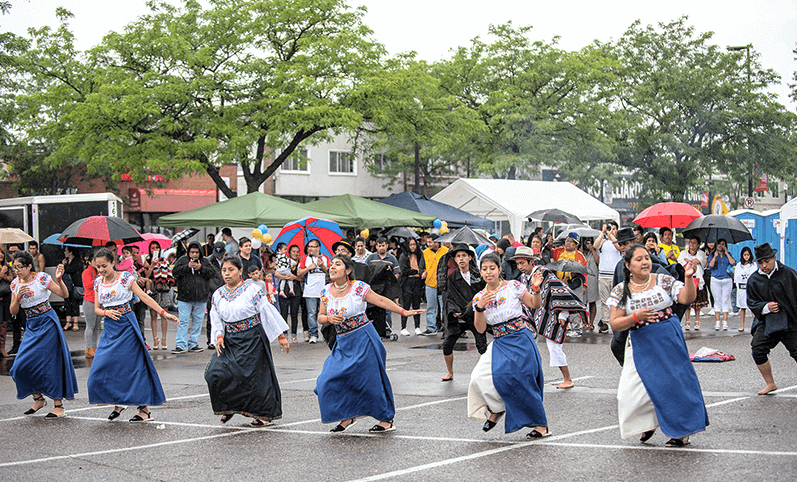Ecuador National Day, celebrated on the 10th of August, holds a special place in the hearts of Ecuadorians. This day marks the anniversary of Ecuador's declaration of independence from Spanish colonial rule, and it is a time for Ecuadorians to come together and celebrate their nation's rich history and culture.
The Significance of Ecuador National Day
Ecuador National Day is not just a date on the calendar; it's a symbol of Ecuador's resilience, patriotism, and determination. The day holds great significance for Ecuadorians, as it commemorates the courage of their ancestors who paved the way for a free and sovereign Ecuador.
Historical Background
Pre-Independence Era
Before August 10, 1809, Ecuador was known as the Royal Audience of Quito, part of the Spanish Viceroyalty of Peru. The people of Quito, a major city in Ecuador, were inspired by the Enlightenment and the winds of change sweeping across Europe and the Americas. This era saw the birth of ideas about independence and self-determination.
The Fight for Independence
On August 10, 1809, a group of patriots in Quito, led by figures like Juan Pío Montúfar and Juan José Flores, boldly declared independence from Spanish rule. This courageous act was a turning point in the struggle for Ecuador's liberation, though it would take many more years and battles before true independence was achieved.
Ecuador's path to independence was marked by numerous challenges, fierce battles, and significant sacrifices. It was a journey filled with hopes and setbacks, ultimately culminating in the dream of self-governance and sovereignty being realized.
Ecuador National Day: Celebration and Traditions
Ecuador National Day is a time for grand celebrations that bring together the entire nation. The festivities are a vibrant showcase of Ecuador's rich culture, traditions, and culinary delights.
Parades and Festivities
Cities and towns across Ecuador organize colorful parades that feature traditional clothing, music, and dances. These parades are a vibrant display of Ecuador's diverse culture and the unity of its people in celebrating their nation's history.
Traditional Ecuadorian Cuisine
Food plays a significant role in the celebrations. Special dishes like "Hornado" (roast pork), "Ceviche," "Empanadas," and "Seco de Chivo" are prepared in abundance, and families and friends gather to enjoy these traditional delicacies, often accompanied by lively music and dance.
Ecuador’s National Symbols
Ecuador's national pride is reflected in its symbols, which are revered on National Day.
Flag and Coat of Arms
The Ecuadorian flag consists of three horizontal stripes - yellow, blue, and red. The flag's colors represent various elements of the nation, with yellow symbolizing the richness of the land and crops, blue signifying the clear skies and abundant water bodies, and red representing the valor and sacrifices of the people. The coat of arms depicts various elements representing the nation's history, flora, and fauna.
National Anthem
Ecuador's national anthem, "Salve, Oh Patria," is sung with great passion during National Day celebrations. It serves as a reminder of the nation's enduring spirit and its commitment to preserving its heritage.
Notable Ecuadorian Figures
Ecuador National Day is an occasion to pay homage to the remarkable individuals who contributed to the country's independence.
Simon Bolivar
Simon Bolivar, known as "The Liberator," played a crucial role in the liberation of several South American countries, including Ecuador. His vision of a united South America, "Gran Colombia," left an indelible mark on the region's history.
Juan Montalvo
Juan Montalvo was a prominent essayist and political thinker who inspired the quest for Ecuadorian independence through his writings. His words resonated with the people, fostering a sense of national identity and unity.
How Ecuador National Day is Celebrated Today
Today, Ecuador National Day is a grand celebration marked by various public events and cultural exhibitions.
Public Events and Gatherings
People come together in town squares and parks to participate in cultural activities, music performances, and educational events that showcase Ecuador's history, achievements, and the journey to independence. These events foster a sense of togetherness and pride in Ecuador's cultural diversity.
Cultural Exhibitions
Museums and art galleries often organize special exhibitions dedicated to the country's history, art, and its indigenous cultures. These exhibitions provide an opportunity for Ecuadorians to delve deeper into their roots and heritage.
The Importance of Ecuador National Day
Ecuador National Day is not merely a historical event; it is a testament to the enduring spirit and unity of the Ecuadorian people. It serves as a reminder of the sacrifices made by those who fought for freedom and the importance of preserving the nation's rich cultural heritage. It is a day to celebrate the past and look forward to a brighter future as a united nation.
In conclusion, Ecuador National Day is a day of celebration, remembrance, and unity. It's a time for Ecuadorians to come together and honor their history, culture, and the heroes who paved the way for their nation's independence.
FAQs
- Why is Ecuador National Day celebrated on August 10th? Ecuador National Day is celebrated on August 10th to commemorate the declaration of independence from Spanish colonial rule in 1809.
- What are some traditional Ecuadorian dishes enjoyed on National Day? Traditional Ecuadorian dishes like "Hornado," "Ceviche," "Empanadas," and "Seco de Chivo" are commonly enjoyed during National Day celebrations.
- Who is considered a national hero in Ecuador's fight for independence? Simon Bolivar, known as "The Liberator," is a national hero in Ecuador's struggle for independence.
- How do Ecuadorians celebrate National Day in modern times? In modern times, Ecuadorians celebrate National Day with parades, cultural exhibitions, public events, and gatherings that showcase their history and culture.
- What is the significance of the Ecuadorian flag and coat of arms? The Ecuadorian flag and coat of arms represent the nation's history, heritage, and pride, with the flag's three stripes symbolizing various elements of the country.
References
- "Ecuador's Struggle for Independence" - National Library of Ecuador
- "Simon Bolivar: The Liberator" - Biographies of the World
- "Juan Montalvo: Ecuadorian Essayist and Political Thinker" - Ecuador Culture and Traditions
